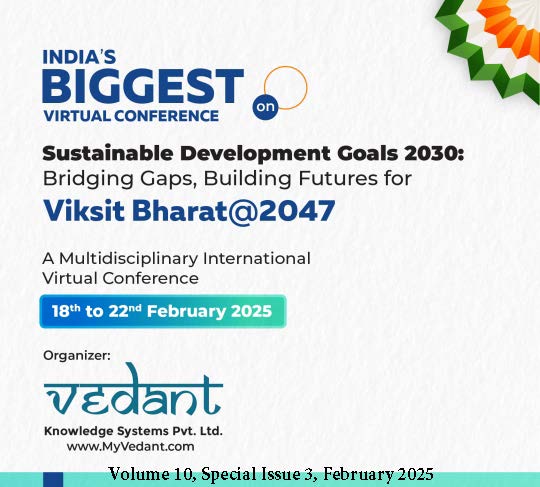Crafting Creativity: The Role of Fashion Pedagogy in Sustainable Development
DOI:
https://doi.org/10.58213/vidhyayana.v10isi3.2214Keywords:
Fashion education, Creativity development, Design education, Creative methodologies, Sustainable developmentAbstract
Fashion pedagogy serves as a catalyst for transformative learning, fostering the creative skills necessary for driving innovation in the fashion industry. This study draws on data from 131 educators, including college professors and lecturers in design fields, who participated in an online creativity training program provided by the National Institute of Fashion Technology. The research examines the intersection of fashion education and sustainable development, focusing on how cultivating creativity can help address contemporary environmental and social challenges.
Through an analysis of current practices, the study identifies existing gaps in the integration of creativity within design education and suggests methods for strengthening creativity-centered learning. Specifically, the study explores four essential characteristics of creativity originality, fluency, flexibility, and elaboration and their applications within the academic culture. Additionally, the objectives of this study include investigating the practices, evaluation, and recognition of creativity in design education and identifying key creativity development tools used in various educational institutions.
Drawing on pedagogical approaches and sustainable development literature, the study highlights how creative methodologies from fashion education can enhance sustainable practices. By fostering creative thinking and problem-solving skills, educators are better equipped to prepare students to address the sustainability demands of today’s society. Descriptive and exploratory methods are utilized to analyze data, offering insights into how creative tools and teaching methods can promote sustainable development in fashion education. This study contributes to an improved understanding of the role of creativity in design education, particularly in fostering a curriculum aligned with the United Nations Sustainable Development Goals. Ultimately, the research aims to support the integration of creativity as a fundamental component of the fashion education curriculum, positioning it as a strategic driver for innovation and sustainability in the industry.
Downloads
References
Amini, M. H., Bienstock, C. C., & Boradkar, P. (2022). Sustainable product development: A conceptual framework and exploratory investigation. Journal of Cleaner Production.
Assink, M. (2006). Inhibitors of disruptive innovation capability: A conceptual model. European Journal of Innovation Management, 9(2), 215-233.
De Bono, E. (1970). Lateral thinking. London: Penguin.
Goldsworthy, K. (2021). Designing for circularity in fashion: A practical approach. Fashion Theory.
Guilford, J. P. (1967). Alternative Uses Task. Bloomington: Indiana University, School of Education, Department of Educational Psychology. Retrieved from http://www.indiana.edu/~bobweb/Handout/sub/Bob_CT_Uses.html
Jha, S. K., & Kumar, S. (2017). Innovative and creative approaches to sustainable tourism development in India. Tourism Review International, 21(1-2), 63-74.
Kirchherr, J., & Piscicelli, L. (2021). Towards an education for the circular economy (ECE): Five teaching principles and a case study. Resources, Conservation & Recycling.
Menon, N. R., & Menon, S. S. (2017). Creative approaches to sustainable development in India: A review. International Journal of Sustainable Development & World Ecology, 24(4), 305-314.
Mishra, S. K., & Pandey, V. K. (2019). Using creative thinking to promote sustainable livelihoods in rural India. International Journal of Rural Management, 15(2), 111-130.
Monteiro, R., & Valença, M. (2015). Research report D-Think: Design thinking applied to education and training. Escola Superior de Artes e Design (ESAD) Matosinhos.
Niinimäki, K., Peters, G., Dahlbo, H., Perry, P., Rissanen, T., & Gwilt, A. (2020). The environmental price of fast fashion. Nature Reviews Earth & Environment.
Singh, A. K., & Sharma, R. K. (2018). Creative solutions for sustainable urban development in India. International Journal of Sustainable Development & World Ecology, 25(1), 56-67.
Suneetha, M. S., & Suresh, V. S. (2017). Creative perspectives on sustainability education in India. International Journal of Sustainability in Higher Education, 18(5), 825-842.
Torrance, E. P. (1966). Torrance tests of creative thinking. Educational and Psychological Measurement.
United Nations General Assembly. (2015). Transforming our world: The 2030 agenda for sustainable development. Retrieved from
